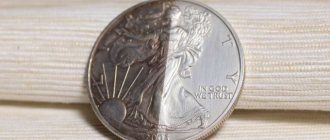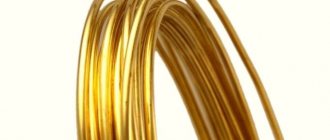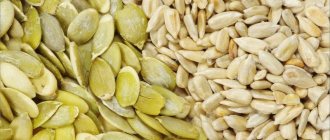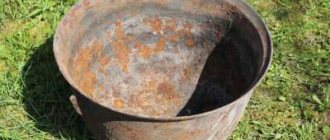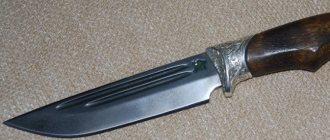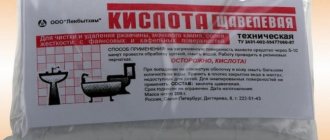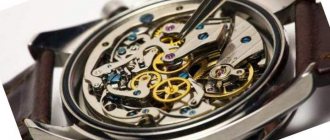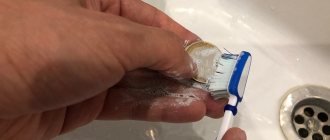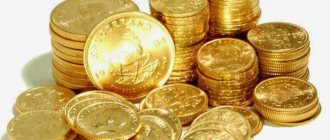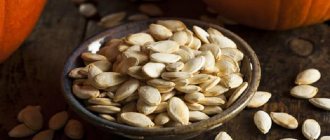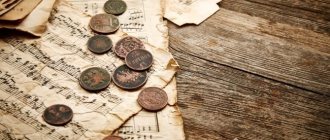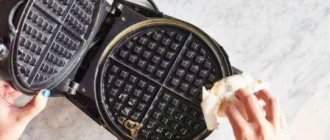Ancient and current coins are often covered with red, whitish, and green spots. Such defects have nothing to do with a noble patina, as they are the result of oxidation.
To remove traces of oxides and contamination, it is recommended to use the most effective recipes. Folk remedies or professional formulations can act as cleaners.
When carrying out restoration work, it is important to take into account the degree of corrosion and the material from which the coin is made.
Let’s look in more detail at how and how to clean coins, including rusty old ones, from rust and oxidation at home.
Mechanical method
Usually used in particularly advanced cases. In this case, the coin is literally cut out or reduced in a layer of oxides.
A simplified process looks like this:
- The surface layer of dirt deposits is removed from the coin, after which it is desalted in a container with distilled water.
- A layer of surface oxides (including loose ones) is impregnated with synthetic resin (B72).
- Using scrapers, cutters, brushes and needles of varying hardness, all excess is removed from the surface. The resin strengthens loose areas, binds them and prevents cavities from forming, which allows the surface to be leveled.
The work is performed under magnification (for example, a microscope). a successful result directly depends on a scrupulous attitude and experience, so it is better to entrust work with expensive items to a professional.
Features of cleaning products made from different materials
When choosing a method and means of cleaning coins, it would be correct to take into account the material from which they are made. The right approach will quickly and effectively restore the product's shine without damaging it.
Gold and silver
Numismatists usually value items made of silver and gold. They require careful care and special storage conditions. Money made from precious metals should be stored separately from other banknotes, otherwise they will oxidize and will have to be washed much more often.
The correct choice of cleaning method and means will preserve the shine of gold coins and their value.
To clean gold and silver money, use gentle products, avoid aggressive substances and excessive mechanical impact.
Dry cleaning
You can wash stains on banknotes made of precious metals with a 10% ammonia solution. First, soak the products for several days in distilled water, and then for an hour in an ammonia solution. After the allotted time, rinse them and wipe dry.
When working with ammonia, take precautions: wear rubber gloves and open a window for ventilation.
Mechanical cleaning
Mechanical cleaning with brushes of different hardness will help remove minor dirt. To begin, soak the fines in distilled water for several days. Then polish it with a toothbrush, thoroughly cleaning the surface. To remove heavy stains, additionally use a mild soap solution.
Copper
You can clean copper coins using various means. The choice of method depends on the type of contamination. To remove red deposits, soak the fines in a 5% ammonia solution for 2 minutes. A solution of citric acid will help get rid of green stains, and acetic acid will help get rid of yellow stains.
To protect coppers from the negative effects of the environment, evenly cover them with patina - a special protective layer
After cleaning the coppers, perform the final stage of care:
- Rinse items with distilled water.
- Dry well with a napkin or soft towel.
- To create a protective layer, dissolve 50 g of copper sulfate in 1 liter of distilled water and add 5 g of potassium permanganate. Heat the mixture to +90 ℃.
- Dip the products into the solution and soak for several minutes. Turn them over periodically during processing so that the patina evenly covers the surface.
Nickel and bronze
Products made of nickel and bronze can be cleaned yourself at home, using improvised or special products.
Salt and vinegar
Step-by-step cleaning instructions:
- Prepare a solution based on table vinegar and salt.
- Soak nickel money in liquid.
- After soaking, treat the surface with an eraser and then polish with a soft cloth.
After cleaning, be sure to rinse the small items with running water and wipe dry with a soft cloth or
Trilon-B
For cleaning, prepare a glass container and Trilon-B product. Pour the powder into a container and add boiled water. Dip money into the solution, leave until the stains are completely cleaned, then dry and polish.
Bimetal
Bimetallic coins are an alloy of several metals. When choosing a cleaning method and means, it is important to consider the characteristics of each of them.
When to contact specialists
Before cleaning, a number of factors need to be assessed:
- potential value - for ancient precious coins it is better not to allow “amateur activity”;
- understanding of what material to work with;
- thickness of the corrosion layer.
If we are talking about very expensive products, you should not clean them yourself. The fact is that their compositions are very different from modern money, so various liquids and reagents can behave unpredictably. It is very easy to spoil an expensive and rare specimen, but restoring it to its previous condition is not easy. A true professional restorer first tries to establish the composition with the approximate percentage of different metals, and only then begin cleaning. Sometimes reagents are applied to spots because damage in some areas requires less aggressive cleaners than in others.
If there is too thick a layer of sediment on the surface, this means that after cleaning, cavities - deep depressions - may appear, and they will almost completely ruin the specimen. This approach can reduce the cost of the product tens of times.
Do we spend money on shopping or make do with what we have at hand?
Specialized solutions intended for cleaning procedures were developed taking into account the specifics of each specific metal: copper, silver, etc. Each of the products presented on the shelves of hardware stores allows you to remove various contaminants, uneven patina, and oxides from the surface of coins.
However, in an effort to restore copper and other metals to their original radiance and purity, not everyone can afford to purchase these rather expensive solutions.
Therefore, most ordinary consumers decide to tidy up the copper surface of coins using more accessible and less expensive means.
Alternative cleaning methods suitable for use at home can clean almost any dirty copper coin.
The list of necessary funds available in most households is as follows:
- "Coca Cola";
- lemon acid;
- soap;
- electrolysis.
With the help of each of them, many ordinary consumers were able to clean the copper surfaces of coins and other products made from this and other metals without unnecessary hassle.
The algorithm for cleaning coins made of copper and silver is characterized by the same simplicity and accessibility as for similar copper products. Numerous online resources contain all the necessary information.
The following review is devoted to the task of cleaning copper coins in various ways.
Ways to Clean Zinc Coins
Attention! Money made from this metal is the most difficult to clean. The complexity of the procedure is that zinc reacts only to strong acids, which can corrode the product, and also quickly darkens under the influence of air in just a couple of hours.
The optimal method is to remove plaque using a 0.5-1% solution of hydrochloric acid.
Cleaning coins with citric acid
The progress of work is as follows:
- Pour acid into a wide container.
- Place money in liquid.
- Use a soft brush to clean the coin, holding it in the liquid.
- Every 2-3 seconds, remove the coin and check its condition, because the substance acts quickly and can dissolve not only plaque, but also metal.
- Rinse the product under strong running water and wipe with a soft cloth.
Automotive paste for chrome parts also removes patina and dirt. The drug “Tsinkar” is suitable for combating plaque. It needs to be applied for 20-30 seconds, then wiped off, the procedure can be repeated if necessary. It is advisable, after removing the substances, dip the coin in a soda solution for 8-10 minutes, rinse, and then dry in the oven.
You can use laundry soap to remove plaque, in a manner similar to removing blackness, and also wipe with a cotton swab moistened with 10% ammonia.
Coin Cleaning Tool
There is no specific strict procedure for cleaning antique coins, as coins may vary in composition, age and condition. Developing your brushing technique requires experimentation and practice. So, you will soon find the old coin cleaning tool that is most suitable for you.
A brush is a very useful tool for cleaning dug coins at home. These brushes can be bought in the store. It is recommended to use brushes with plastic, copper and steel bristles. Copper bristles are more versatile because they are stiffer than plastic bristles and softer than steel bristles. Brushes with copper bristles provide a good cleaning of antique coins. If you don’t have a special one, you can use a regular toothbrush.
When cleaning antique coins, never use a metal tool to directly touch the surface of a coin made of a softer metal. This can lead to scratches and even deeper damage. Use steel bristles only to remove the outer layers of dirt from the coin. Use plastic tools whenever possible.
Besides brushes, there are other useful tools you can use to clean antique coins. Toothpicks, pointed wooden sticks, straight pins, toothbrushes and erasers will all come in handy. You may already have all this at home. But you can purchase such simple “equipment” at any hardware store at minimal cost.
What are the don'ts when cleaning antique coins?
- Once again: there is no need to remove the patina at all!
- Use of any sandpaper and abrasive pastes. It may be possible to clean off dirt with them, but they will probably ruin a coin.
- Metal brushes can easily damage the surface of coins. As a last resort, you can use brushes with brass bristles.
- The use of concentrated solutions of strong acids: sulfuric, nitric, hydrochloric. There is a high probability of permanent damage.
- High heat. The coin may simply collapse.
Antique coins are rare, which is why it is important to clean them properly. After all, damaged “money” cannot be restored, and purchasing another one can be expensive.
Cleaning coins at home with distilled water and olive oil
The first step in cleaning an antique coin is to immerse it in water. This will loosen scale and deposits, making them easier to remove. Use distilled water, as tap water may contain minerals that are harmful to the coin. Soak the coin for one or two days, then remove it from the water and lightly scrub it with a brush. This procedure may need to be repeated for several days or weeks, depending on the degree of contamination of the coin. After soaking a coin in water, it must be wiped dry.
If distilled water doesn't produce the desired results, try soaking the coin in olive oil. Place the coin in a closed plastic or glass container for a week. Check the condition of the dirt and repeat the process. After the process is completed, you will need to remove all the oil from its surface. Use a non-aggressive detergent for this.
To achieve quick results, you can use chemical cleaners designed specifically for metal surfaces. These cleaners must be used with caution as every coin is different. The chemical reaction can be unpredictable, so experiment with less valuable coins first. Always read the instructions carefully before using a chemical to ensure it is compatible with the coin's composition.
How can I remove it using folk remedies?
The appearance of rust and other oxides on coins is the result of contact of the products with:
- water,
- earth,
- fat and other substances.
Removing oxidation products using home remedies is not difficult if used correctly. Folk recipes use the most accessible and inexpensive means that are available in any home.
These include:
- soap,
- soda,
- cola,
- ammonia,
- kerosene,
- spoiled milk,
- vinegar,
- citric acid or juice,
- toothpaste.
Soap
There can be any type of solid detergent. Most often they use laundry or baby soap.
The method is considered gentle, effective and universal, as it is suitable for any coins. However, it only helps to cope with weak traces of oxidation.
Prepare a soap solution in a container by adding shaved soap (40 g) to heated water (60 ml). Place coins in the foaming liquid for 4-6 hours. After this, wipe off any remaining dirt with your fingers or a napkin and rinse.
Soap solution and soda
This method helps when a regular soap solution does not cope with the task of cleaning rust.
To prepare the product, take 30 g of finely grated soap and a teaspoon of soda. Mix the ingredients and add hot water to them to make a thick paste. The coin is immersed in a soap-soda mixture.
Soaking time depends on the degree of contamination. For some coins, a few hours are enough. For products that have undergone severe corrosion, it takes up to several days or even weeks.
If coins are kept in a soap-soda slurry for a long time, then periodically the composition is replaced with a fresh one, and the deposits that have formed are removed from the surface of the metal with a napkin.
How to clean with kerosene?
The product is one of the most effective and simple. However, during cleansing it is necessary to carefully monitor the process in order to recognize its completion in time.
For work, take a transparent glass or container made of chemically inert material. They put coins in it and fill it with kerosene. To mitigate the reaction, you can add a small amount of WD-40 lubricant.
The holding time depends on the depth of oxidation and can range from several minutes to 24 hours. The transparent walls of the dishes allow you to monitor the dissolution of oxides. As soon as the surface of the object is clean, it is taken out and wiped with a cloth.
How to remove with ammonia?
The ammonia product helps to easily achieve a positive result, and the cleaning process itself is simple and quick.
Coins covered with rust and oxides are placed in a container and filled with 10% ammonia. The exposure time in the reagent depends on the degree of contamination and can range from 10 seconds to an hour.
During soaking, the round timber is periodically turned over without removing it from the ammonia. When cleaning is completed, add clean water to the container to dilute the concentration. After this, the coins are taken out and washed with water. Experts do not recommend removing coins from concentrated ammonia.
If the metal is slightly oxidized, ammonia can be used in another way: apply the liquid to a cotton swab and wipe the surface of the product.
How to remove old rusty deposits with Coca-Cola?
Carbonated drinks containing phosphoric acid are often used to dissolve rust. A weak organic acid effectively removes oxides, converting them into easily removable salts.
The method is quite simple: money is placed in a container, filled with cola and left for 30-60 minutes. If necessary, the process is repeated.
You can speed up cleansing by very lightly heating the cola in a water bath. After the oxides have dissolved, the surface of the coins is wiped with a rag. Read more about cleaning objects and surfaces from rust using Coca-Cola here.
Rules for cleaning silver coins
Silver coins can be washed with citric acid, table vinegar, ammonia, Trilon-b salt and a solution prepared with baking soda. It should not be used dry. This is fraught with the appearance of small scratches. A homogeneous mixture containing ammonia, toothpaste and soda can give a good effect. Before using it, you need to make sure that there are no abrasive particles. Following these tips on how to clean old silver coins can greatly improve their appearance.
Differences between rust and patina
Before you start washing a coin from deposits, you need to make sure that this is really necessary. Experienced numismatists can easily distinguish significant corrosion from patina, which does not need to be cleaned, as this will reduce the value of the collectible item. Only novice collectors consider a shiny coin that looks like new to be of special value. In fact, excessive cleaning can lower the appraised value. The collectible item must be designed to reflect its actual age.
A normal oxidized film gives the coin disk a noble appearance. In addition, it often serves as one of the proofs of authenticity, since many good quality fakes do not form a specific oxide film. In addition, if the fake was made recently, then it will not have a patina due to the fact that the necessary time for its natural formation has not yet passed.
Safely clean old and collectible items at home
Products that can help with contamination on the surface of valuable specimens without causing harm include sweetened water and onion juice. Special formulations are most often made based on oil or petroleum jelly. After being in a liquid environment, coins should be wiped with a soft cloth. It is prohibited to use gels intended for washing dishes and plumbing fixtures.
The regularity of cleaning is determined by the numismatist himself. If he does not plan to sell coins, there is no urgent need for careful and expedited processing. Exhibits of particular value are recommended to be cleaned with special compounds. If you lack confidence in your own knowledge and experience, you should trust the professionals. Damaged coins in most cases cannot be restored.
Old products, unlike modern ones, are not protected from external influences. When cleaning, it is necessary to take into account that the strength of ancient products is greatly reduced. Therefore, when choosing a means for their treatment, you should give preference to gentle and safe preparations. How to clean old coins at home is indicated in the instructions that come with them.
List of essentials
Before you start cleaning, you should find something to clean with. To do this, look for the following tools at home:
- Old toothbrush
- Tweezers,
- Toothpick,
- brush,
- And the coin cleaner itself.
Before choosing how to clean coins at home, determine the material from which your product is made. Some methods are not suitable for specific alloys. For example, when processing silver, you should not use abrasives, as they can scratch it. In general, the following are used to make coins:
- Iron,
- Copper,
- Aluminum,
- Zinc,
- Gold,
- Silver,
- Platinum,
- Nickel,
- Chromium,
- Tin,
- Zinc,
- Manganese.
You can also find an alloy of several different metals. Let's look at the most effective methods by which you can clean coins at home.
Cleaning coins with citric acid and liquid soap
The method is gentle and suitable for removing small stains. But if the coin is rare, then without experience it is better not to experiment with acids. First, we test the method on less valuable finds.
To prepare the solution, mix 100 ml of water, a third of a teaspoon of food grade citric acid and two teaspoons of liquid soap, preferably for children. We dip a coin into the solution and immediately begin cleaning. We remove the “greens” with a cotton swab, fine relief can be carefully cleaned with a toothpick. We don't use metal! Lemon interacts quite intensively with oxides, so it is not worth keeping in solution for a long time. After cleaning, wash with water.
Cleaning coins with Coca-Cola
Your favorite drink from childhood can not only clean pipes, but also coins. Oxides on copper-nickel alloys react especially well to the aggressive Coca-Cola environment. The recipe is simple: pour store-bought cola into a glass and put a coin in it for at least two hours. You just need to take into account that all sorts of impurities in this alloy can play a cruel joke on you: instead of the miraculous effect of a clean coin, you can get a bald spot - the relief is erased, and noticeably so.
Cleaning USSR coins in Coca-Cola occurs after 4 hours: the redness noticeably disappears, and the dirt also cannot withstand the chemical composition of the tasty but dangerous drink.
The best way to clean silver coins is “cola soup”, as I call it :) this method is suitable for cleaning silver coins if the patina looks bad and does not allow the relief to show through. For deep cleansing, the coin should be boiled in cola over low heat. How long to hold depends on how “killed” the coin is; you will notice the difference visually. Cook in boiling mode for 3-5 minutes. We rinse with water only after the coin has completely cooled!
Cleaning rust from coins does not require cooking; you can simply wrap the device in a cotton rag soaked in a drink and leave it for 6 hours. If you just fill a coin with cola, then you need to leave it for at least 12 hours.
If you are lucky enough to solve the problem of cleaning gold coins, then cola will come in very handy. It will not damage the metal, will not erase the relief, will clean carefully, and there will be no need to scratch the coin with a mechanical tool.
Cleaning coins with Coca-Cola
These are two of my favorite methods for cleaning coins completely or in preparation for further mechanical cleaning. And now about the third method, which I do not use, but I will say a few words about it due to its unprecedented popularity.
"Oil" boiling
The method is quite effective and allows you to wash off the patina. It uses olive or vaseline oil, which is poured into a metal pan or deep fryer and heated. Coins are dipped into hot liquid and boiled for ten minutes, after which they are washed with soap and a soft brush.
Heat Vaseline or vegetable oil in a water bath. Immerse the fines in the hot liquid for 10 minutes.
Note! In some cases, additional boiling in clean water is necessary to remove residual oil.
How to clean an old coin
To ensure that the collectible object does not lose its value, it cannot be cleaned until it shines, as this will negatively affect the preservation of the relief. Rough mechanical or chemical cleaning is also unacceptable. Since old coins can be very fragile, in most cases they are either not cleaned at all or are cleaned using special gentle products. It is also acceptable to use electrolysis.
Having studied various methods of cleaning coins and choosing the optimal one, you need to maintain the accuracy of each step.
Basic alloys and metals
Typically, products are minted from several metals. Each type has its own most suitable cleaning method.
- The most expensive metal is platinum. They were first released in the Russian Empire;
- Gold money began to be produced almost from the time of its invention;
- Silver specimens have been made since the 6th century BC;
- Copper has been used for coinage since antiquity;
- Tin is used as a constituent of alloys;
- Nickel coins began to be produced in 1850;
- Zinc money has been made since World War II;
- Aluminum money appeared at the end of the First World War;
- Iron money began to be issued back in the 16th century BC;
- Bronze.
Cleaning can be done both mechanically and chemically.
Cleaning using bristle brushes of varying degrees of hardness is called mechanical. It is strictly forbidden to use metal objects for this purpose.
This method is used to remove dirt and dust, being careful not to damage the surfaces.
In case of extensive contamination, dry cleaning with various oxides is used, which differ depending on the material of manufacture.
Electrolysis method
Those who paid due attention to physics lessons are familiar with this concept from school. Its usefulness when processing coins will be ensured if the following two important rules are observed:
- Compliance with safety regulations;
- Testing the method on inexpensive items to avoid damage to more valuable items.
It is worth paying special attention to the second point of the operating principles: the fact is that sometimes, due to a minor mistake, serious, irreparable damage is caused to a coin or other valuable item.
Old coins are restored to their purity and shine through the use of a small power supply (6-12 volts). As such, a universal charger can be used. Another alternative: an old mobile phone charger.
The following are attached to the power supply or its alternative:
- two alligator clips;
- some small metal object (not copper or brass is recommended);
- deep dishes made of glass or ceramics.
A saline solution is also used, prepared in compliance with the following proportions: 1 tablespoon of salt per 1 liter of water.
The process is simple, you just need to follow all the steps exactly. One clip - with a minus sign - is attached to the specimen, while the opposite one - with a plus sign - is attached to a metal object.
Then the coin and the metal product are lowered into a pre-prepared container where the saline solution is located, while the power supply is plugged into the outlet.
The result makes itself known quite quickly: the process of dissolving oxides and dirt leads to rapid clouding of the solution. The “bathing” period is short, after which the specimen is washed with hot water and dried.
A little care and precision in following all steps will allow you to achieve the desired results.
Where does corrosion come from?
When they talk about rust, it is incorrect from a professional point of view. The fact is that only products made of iron or alloys of this metal rust. In other cases, experts use the term “oxidation.” The nature of this unwanted chemical reaction is that the surface corrodes and changes color due to contact with oxygen. This process is inevitable, although some alloys undergo it more quickly and some much more slowly.
Oxygen corrosion occurs from the action of air, but it occurs much faster in the presence of factors such as moisture, soil, and any other liquids. Even when the product is constantly used under normal conditions, it is gradually covered with a film of oxide due to the fact that traces of sebum from the hands remain on the surface.
Edge Cases
If the coin is brought to an extreme state: it is unusually heavily soiled, you can resort to caustic soda. The product must be handled very carefully; it must be diluted in cold water.
Since this product is inherently a strong alkali, it is recommended to avoid contact with it. You need to lower the product into this solution using tweezers. Residence time in the solution: no more than ten minutes, after which the coins are removed and washed.
However, not all coins can handle this method. If a green or blue stain is noticed on their surface, the cleansing process must be interrupted. If you have a negative reaction, you should not use this method on already tested products.
Having studied various methods of cleaning coins and choosing the optimal one, you need to maintain the accuracy of each step.
It is also necessary to take care of your own safety - especially when using certain methods.
Clean, shiny and sparkling coins delight both connoisseurs and connoisseurs of these products, as well as ordinary users who, for one reason or another, are interested in cleaning reused coins made of copper and other metals.
What can't be used and why?
To preserve the design on coins and protect the surface from scratches and other damage, you must remember about prohibited cleaning products and methods.
The following are taboo:
aggressive compounds - strong reagents can partially dissolve the metal and damage the image;- abrasives - they scratch the metal surface and smooth out the three-dimensional pattern;
- strong heating - heat treatment can cause deformation of an expensive product;
- prolonged soaking in any cleaning agent can deteriorate the appearance of the coin.
If a particular product raises doubts about its effectiveness and safety, it is recommended to refrain from using it. This is especially true for radical ultra-fast methods. They may harm the coin and reduce its numismatic or modern value.
